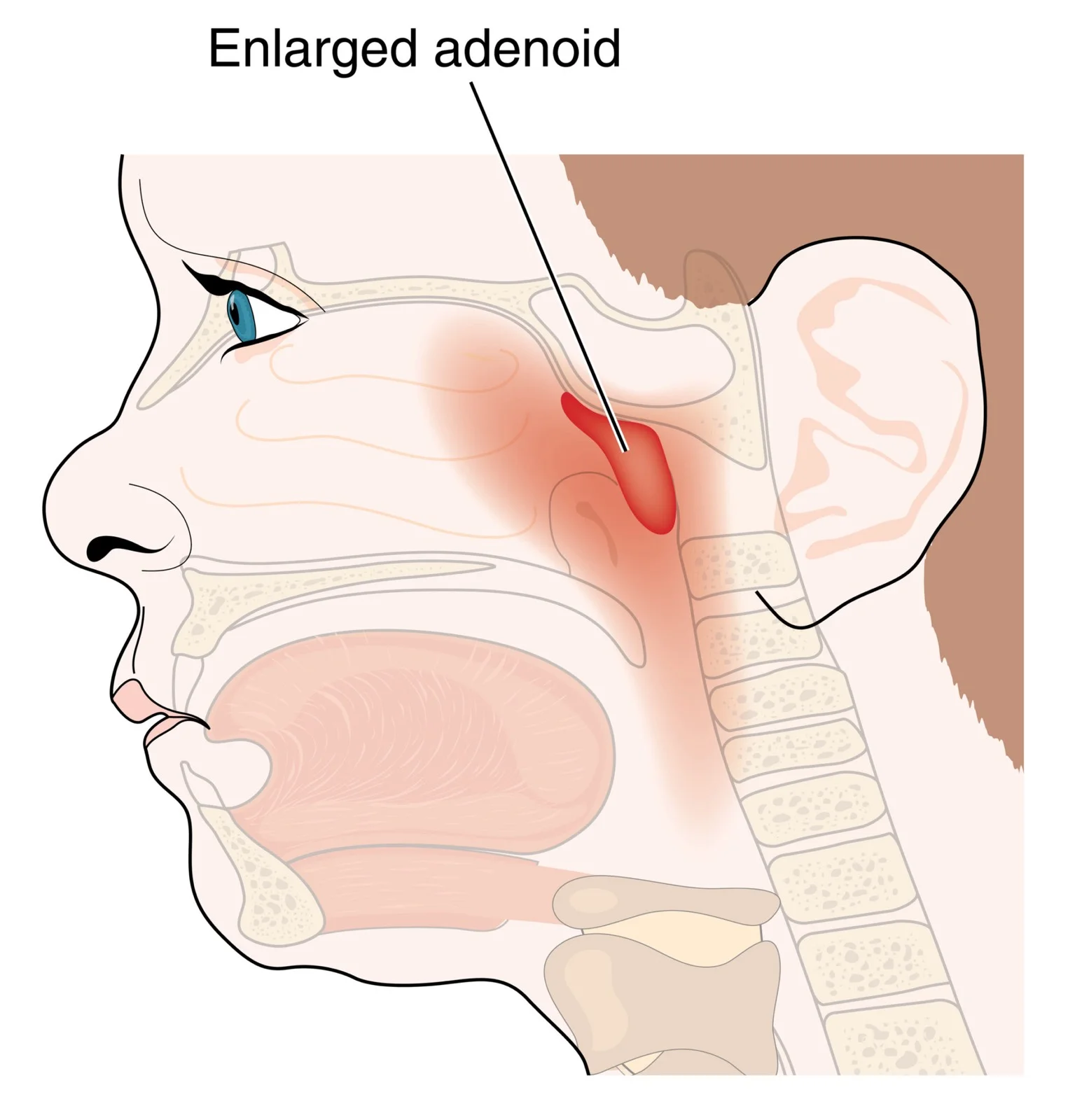
An adenoidectomy is a surgical procedure to remove the adenoids, which are small glands located at the back of the nasal passage. The procedure is typically performed in children, but it can also be done in adults.
How it is performed
The procedure is typically performed under general anesthesia, which means the patient will be asleep during the surgery. Here's an overview of how an adenoidectomy is performed:
- The patient will be given instructions on how to prepare for the surgery, which may include fasting for a certain period of time before the surgery.
- The patient is given general anesthesia to ensure that they are asleep and do not feel any pain during the surgery.
- A mouth gag will be inserted to keep the mouth open during the procedure.
- A special instrument called 5a curette will be used to scrape the adenoid tissue away from the bone. In some cases, microdebrider or a laser may be used to remove the adenoids.
- After the adenoids are removed, A cautery tool is used to stop any bleeding and to help with healing.
- After the surgery, the patient will be monitored in a recovery room until they wake up from the anesthesia. The patient may experience some soreness and discomfort in the throat and may have some bleeding from the nose or mouth.
- Most patients are able to go home the same day as the surgery.
Why is the surgery done
some reasons why an adenoidectomy may be done:
- Recurrent infections: If a child experiences recurrent ear infections, sinus infections, or throat infections that do not respond to other treatments, an adenoidectomy may be recommended. The adenoids can harbor bacteria and viruses, which can contribute to these infections.
- Breathing difficulties: If the adenoids are enlarged, they can obstruct the airway and make it difficult for a child to breathe, especially during sleep. This can lead to snoring, mouth breathing, and other breathing difficulties.
- Sleep apnea: If a child has sleep apnea, which is a condition where breathing is interrupted during sleep, an adenoidectomy may be recommended to improve breathing and reduce the risk of complications.
- Ear problems: Enlarged adenoids can cause a blockage of the Eustachian tubes, which can lead to fluid buildup in the middle ear and cause ear infections or hearing loss.
- Tumors: In rare cases, tumors or growths can develop in the adenoids and may require surgical removal.
What to expect post surgery
After an adenoidectomy surgery, you can expect some discomfort and soreness in the throat, similar to a sore throat. You may also experience some bleeding from the nose or mouth, but this is usually mild and resolves on its own. Here are some other things you can expect after an adenoidectomy surgery:
- Some Pain and discomfort for a few days
- For the first few days after the surgery, you may be advised to eat soft, cool foods like yogurt, ice cream, or pudding. You should avoid hot, spicy, or acidic foods that can irritate the throat.
- It is important to rest and avoid strenuous activity for the first few days after the surgery. You should also avoid blowing your nose or sneezing, as this can cause bleeding.
- It is important to drink plenty of fluids to stay hydrated and help keep the throat moist. Drinking warm liquids like tea or broth can also help soothe the throat.
- follow-up appointments to check on your recovery and remove any packing or splints that were used during the surgery.
Risks associated with the surgery
As with any surgical procedure, Tonsillectomy does carry some risks. Here are some of the potential risks and complications are:
- Bleeding
- Infection
- Allergic reactions to Anesthesia
- Breathing difficulties
Frequently Asked Questions
-
WHEN SHOULD THEY BE REMOVED ?
WHEN THEY ARE ENLARGED AND BLOCKING NOSE , BLOCKING AIR and there are SIGNS of
SNORING
MOUTH BREATHING
DIFFICULTY IN BREATHING
RECURRENT RHINOSINUSITIS
MIDDLE EAR INFECTIONS
RECURRENT AOM- Are there any SIDE EFFECTS of Adenoidectomy?
HAEMORRHAGE / BLEEDING ,INFECTION (HAEMORRHAGE IS MINIMAL OR NO WITH COBLATION ADENOIDECTOMY) IS REMOVING ADENOIDS GOOD IDEA : YES TO PREVENT COMPLICATIONS
- IF CHILD HAS GRADE I AND GRADE II ADENOIDS WITH MINIMAL SYMPTOMS
NO TREATMENT REQUIRED. IF THEY ENLARGE TO GRADE III AND GRADE IV AND CAUSE AIRWAYS OBSTRUCTIONS THEN SURGERY IS NEEDED .
- WHAT ARE BENEFITS OF HAVING ADENOIDS REMOVED
- Reduced Mouth Breathing. ...
- Reduced Ear Infections. ...
- Improved Vocal Quality.
- Reduced snoring
- Quality of sleep will be improved
- IS ADENOID REMOVAL A MAJOR SURGERY
NO it is a MINOR surgery performed under general anesthesia.
- WHAT ARE DISADVANTAGES OF REMOVING ADENOIDS
DURING ADENOIDECTOMY EUSTACHIAN TUBAL CUSHIONS(WHICH CONTAIN ADENOID TISSUE) IS RETAINED ON BOTH SIDES.SO THIS TISSUE WILL HELP IN MAINTAINING IMMUNITY OF THE CHILD EVEN AFTER THE SURGERY.
- DO ADENOIDS GROW BACK AFTER SURGERY
if , adenoids are removed with coblation recurrence is negligible
- Are there any SIDE EFFECTS of Adenoidectomy?
-
CAN ADENOIDS BE CURED WITHOUT SURGERY
adenoids can be shrinked temporarily with steroids,for permanent cure surgery is mandatory
-
CAN ADENOIDS CAUSE SPEECH DELAY
enlarged adenoids may affect the speech
-
DOES ADENOIDS REMOVAL IMPROVE SLEEP
snoring will reduce and the quality of sleep will be better.
-
DOES ADENOID AFFECT BRAIN DEVELOPMENT
in some children adenoid hypertrophy may lead to poor brain development due to low oxygen supply to the brain because of nasal blockage
-
CAN ADENOIDS AFFECT BEHAVIOR
emotional disturbances and behavioral problems like hyperactivity(ADHD),conduct disorders,inattention can be seen.
-
DOES ADENOID REMOVAL HELP SPEECH
persons with adenoids will have hyponasal speech due to lack of airflow through the nose after removal it will become normal.
